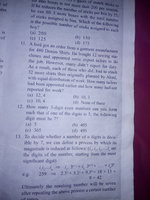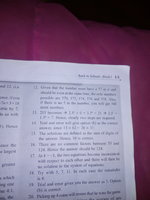Quant Warrior
New member
- Joined
- May 25, 2020
- Messages
- 28
How many 3-digit even numbers can you form if one of the digits is 5 and the following digit must be 7 ?
I solved that question and I found out that there are 5 such numbers : 570, 572, 574, 576, and 578.
Solution in my book is like this:
Given that the number must have a 57 in it and should be even at the same time, the only numbers possible are 570, 572, 574, 576, and 578. Also, if there is no 5 in the number, you will get 360 more numbers.
I don't understand that line in bold. Please help me with this.
I solved that question and I found out that there are 5 such numbers : 570, 572, 574, 576, and 578.
Solution in my book is like this:
Given that the number must have a 57 in it and should be even at the same time, the only numbers possible are 570, 572, 574, 576, and 578. Also, if there is no 5 in the number, you will get 360 more numbers.
I don't understand that line in bold. Please help me with this.


